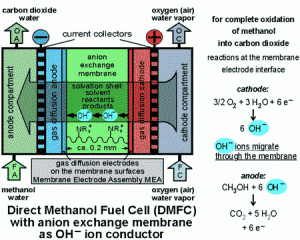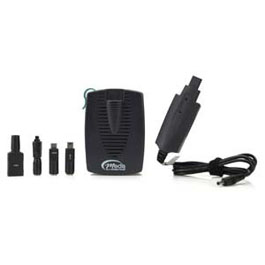A fuel cell is a device that generates electricity by a chemical reaction. Every fuel cell has two electrodes, one positive and one negative, called, respectively, the anode and cathode. The reactions that produce electricity take place at the electrodes.
Every fuel cell also has an electrolyte, which carries electrically charged particles from one electrode to the other, and a catalyst, which speeds the reactions at the electrodes.
Hydrogen is the basic fuel, but fuel cells also require oxygen. One great appeal of fuel cells is that they generate electricity with very little pollution—much of the hydrogen and oxygen used in generating electricity ultimately combine to form a harmless byproduct, namely water.
One detail of terminology: a single fuel cell generates a tiny amount of direct current (DC) electricity. In practice, many fuel cells are usually assembled into a stack. Cell or stack, the principles are the same.
Direct borohydride fuel cells (DBFCs) are a subcategory of alkaline fuel cells which are directly fed by sodium borohydride or potassium borohydride as a fuel and either air/oxygen or hydrogen peroxide as the oxidant. DBFCs are emerging types of fuel cells which are currently in the developmental stage and are attractive due to their high operating potential in relation to other type of fuel cells.
DBFC has some attractive features such as high open circuit potential, ease of electro-oxidation of BH4− on non-precious metals such as nickel, low operational temperature and high power density. The DBFC is a promising power system for portable applications. One such example is MEDIS Extreme Fuel Cell Charger which is already available in the market. The Medis Xtreme offers 20 watt-hours of every single cartridge of sodium borohydride used. Each activated cell can be used for up to three months although it’s recommended that you change it every six weeks or so.


